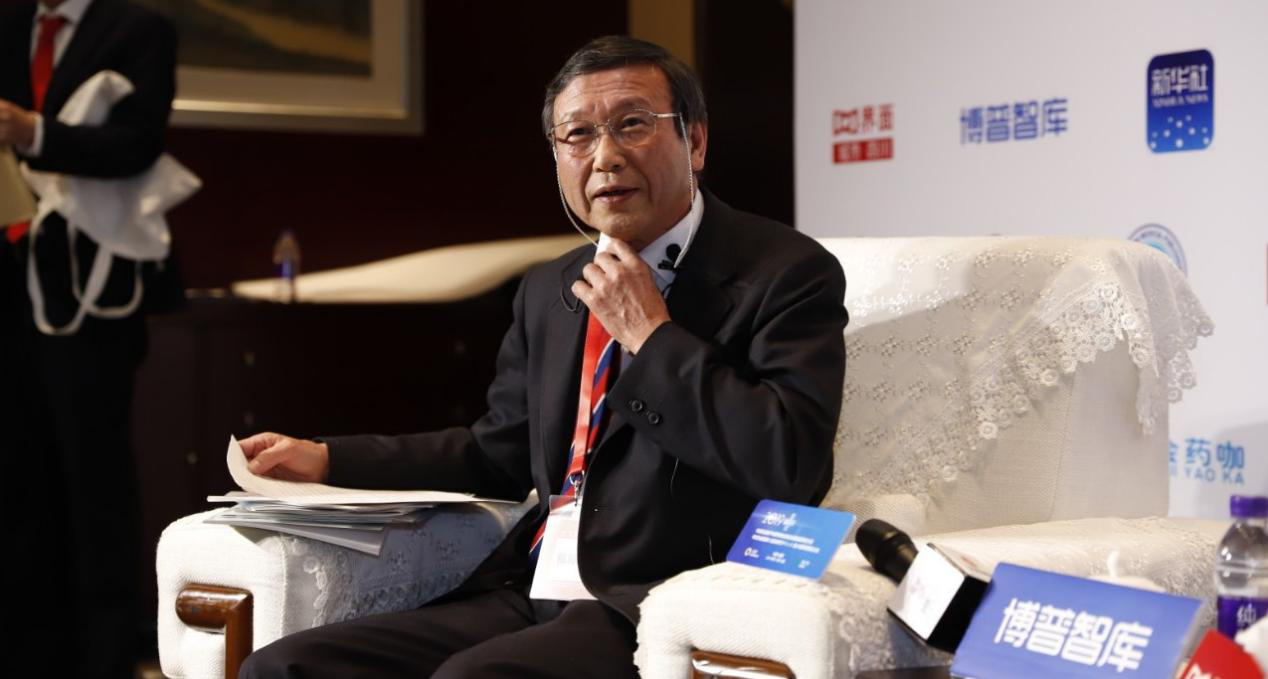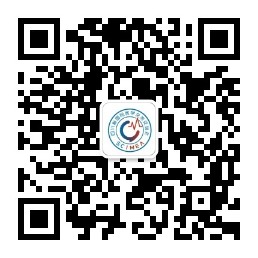Forwarded from heartonline.cn
Aortic valve degenerative calcification is the main cause of aortic stenosis, and patients with bicuspid aortic valve deformity are more prone to aortic stenosis. The incidence of bicuspid aortic valve malformation in Chinese patients with aortic stenosis is significantly higher than that in western countries. However, due to abnormalities of the anatomical structure of bicuspid aortic valve, it has been a serious challenge for transcatheter aortic valve replacement (TAVR). On the morning of April 16, in the global live demonstration of the 5th China Valve (Hangzhou) Conference, Professor Chen Mao, director of the Department of Cardiology, West China Hospital of Sichuan University, and vice president of SCIMEA, demonstrated a whole process of TAVR treatment with his team on live streaming. This was a female patient with bicuspid aortic valve malformation complicated with severe stenosis. The TAVR process was smooth and gained satisfactory results.
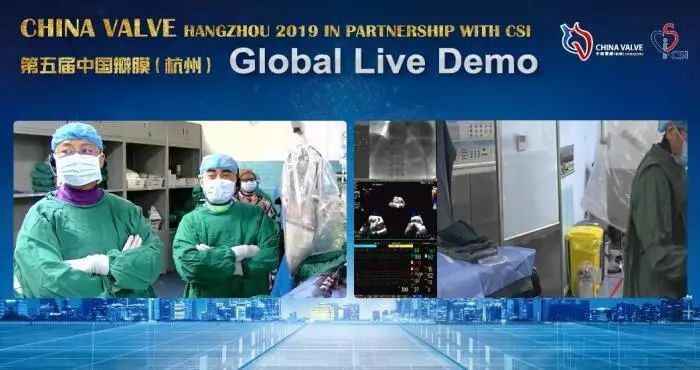
TAVR global live demonstration, professor Chen MAO (right) and professor Feng Yuan (left)
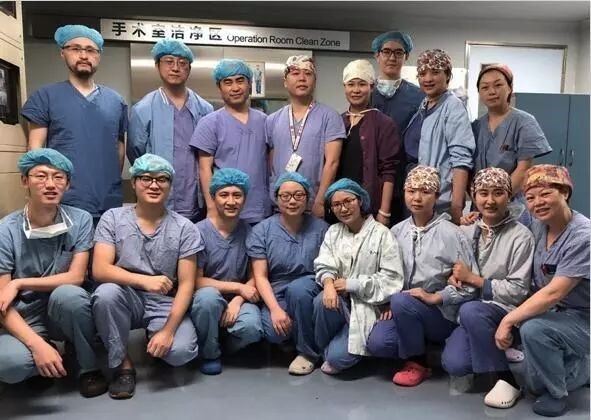
TAVR team of West China Hospital of Sichuan University
Ⅰ. Typical case: severe 0-type bicuspid aortic valve stenosis
The 76-year-old female patient was admitted to the hospital with "post-activity chest pain and chest tightness for 5 years, exacerbated with dyspnea for 6 days", NYHA cardiac function level IV, concurrent with hypertension, type II diabetes, acute decompensation of chronic obstructive pulmonary disease, left bundle branch block, lacunar infarction and other medical history. The condition was critical.
Preoperative cardiac color Doppler ultrasonography showed enlargement of the left atrium, marked augmentation of the ascending aorta, degeneration of the aortic valve with severe stenosis, aortic annulus diameter of about 19 mm, aortic valve thickening, calcification, bicuspid type ( right rear-left rear). The opening of the leaflets was obviously restricted, which was acceptable, and the posterior annulus of the mitral valve was calcified.
TTE measured that left ventricular ejection fraction (LVEF) was 54%, transaortic valve pressure difference was 57 mmHg, trans-aortic valve blood flow velocity was 4.8 m/s, effective valve orifice area was 0.4 cm2, microscopic reflux under the valve, bicuspid valve and tricuspid valve.

Fig. 1 TTE image before surgery
The diameter of the aortic annulus was 22.4 mm, the diameter of the ascending aorta was 43.3 mm, the area of the aortic annulus was 382.6 mm2, the calcification score (HU850) was 127.4 mm3, and the angle between the annulus and the cross-section was 60.84°. It was horizocardia.
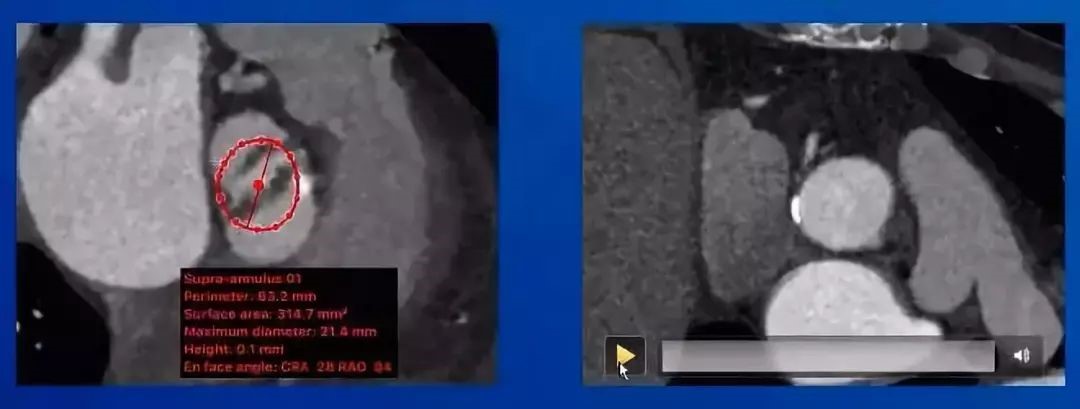
Fig. 2 CT image before surgery
After calculation, the STS score of this patient was as high as 8.963%. According to the comprehensive evaluation by the cardiac team, this patient had high surgical risk and TAVR was more suitable.
Ⅱ. TAVR strategy: valve implantation via femoral artery
Before the operation, the TAVR team discussed and decided to take the right femoral artery as the main approach; pre-expansion was performed with a 20 mm diameter Numed sacculus; the 23/26 mm TaurusOne valve was placed through the femoral artery.
Ⅲ. Surgical procedure: the valve size was reduced and the process went smoothly
Under general anesthesia, the right femoral approach was used. The TAVR valve was placed into the anterior catheter to measure the pressure difference across the aortic valve of 82 mmHg. In order to fully guarantee the function of the valve, professor Chen Mao's team downsized the the valve used before placement, and used a 23 mm diameter TaurusOne valve. The sacculus was pre-expanded, smoothly delivered into the valve, and fully expanded. The placement position was ideal, the release was smooth, and the operation was successful.
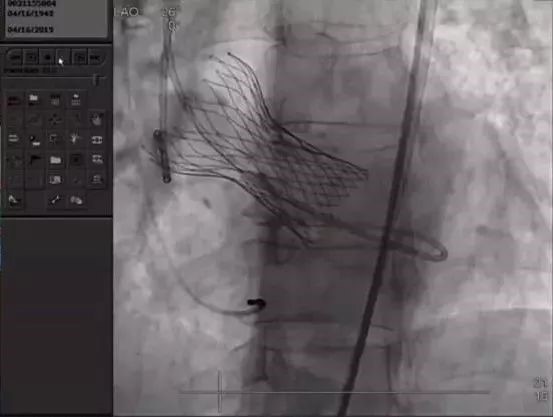
Fig. 3 The valve expanded after release. Left lower: professor Chen Yundai from PLA general hospital participated in the live broadcast.
The hemodynamic parameters of the patient after the placement of valve were immediately improved. After implantation, the LVEF was increased to 71% by ultrasound, the pressure difference across the aortic valve was reduced to 5 mmHg, the blood flow velocity across the aortic valve was reduced to 1.5 m/s, the artificial aortic valve had no reflux phenomenon, there was small perivalvular leakage and the area of valve orifiee was expanded to 2.05 cm2. In addition, only 5 mmHg of cross-aortic valve pressure difference was measured by the rear catheter after valve implantation.
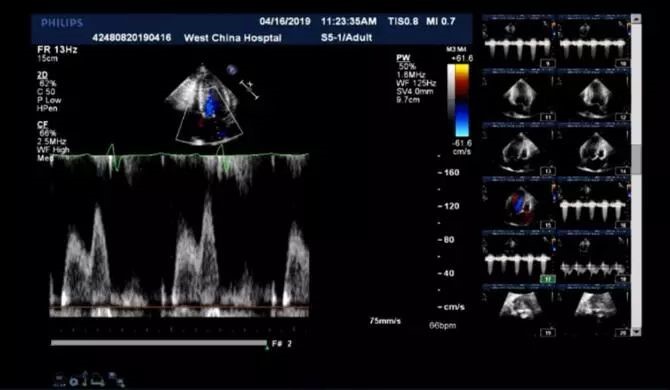
Fig. 4 Ultrasound image after implantation of TaurusOne valve
Ⅳ. Teaching significance: the difficult case demonstration highlighted our confidence to domestic valve
In his presentation, professor Chen Mao said that the disease of this patient was special, belonging to severe 0-type bicuspid aortic valve stenosis, the aortic valve was thickened, the condition was complicated. It was an intractable case. Bicuspid aortic stenosis has been a major challenge for TAVR treatment. The 2012 ESC/EACT guidelines listed bicuspid aortic stenosis as a relative contraindication to TAVR, and the 2017 guidelines still consider patients with bicuspid aortic valve not to be eligible for TAVR. Therefore, the main challenge for the treatment of bicuspid aortic stenosis with TAVR is its uniqueness.
For TAVR treatment, the bicuspid aortic stenosis has a special anatomical shape, and its spatial form of valve leaflet is similar to the crater. Calcification is severe and mostly asymmetrical, often combined with severe left ventricular outflow calcification and ascending aortic dilation. These factors may significantly shift the TAVR valve during release individually or jointly, resulting in valve-in-valve, poor expansion after implantation, and/or oval expansion of the valve, affecting valve durability, and increasing the risks of paravalvular leakage, valve ring rupture and coronary occlusion. This presents a significant challenge to the TAVR treatment for patients with bicuspid aortic stenosis.
The proportion of patients with bicuspid aortic valve stenosis in China is higher than that in foreign countries, and the typical type 0 valve disease is more common in China. However, due to the abnormal anatomical structure of the bicuspid aortic valve, it usually has severe calcification. The TAVR surgery was difficult and risky, and the therapeutic effect was not ideal. To deal with this problem, in 2016, professor Chen Mao's team proposed a valve model selection strategy based on supra-annular sizing, optimized the current valve model selection strategy, and solved the problems, such as improper implantation, severe paravalvular leakage, valve slippage, and valve deformation, caused by improper selection of valve model, significantly improved the success rate and postoperative effect of TAVR in patients with bicuspid aortic stenosis. At present, the quantity of TAVR treatments for the bicuspid aortic stenosis performed by professor Chen Mao's team is leading the world. The combination of a lot of advanced experience and innovative thinking makes the team a leader in the field of TAVR treatment.
In addition, TaurusOne valve was used in this operation, which is a self-developing bovine pericardial valve completely developed by China. Its valve delivery system has been optimized, with excellent intraoperative performance, accurate intraoperative positioning and stable valve release. At present, TaurusOne valve system has completed 120 clinical trials with good experimental results. Meanwhile, the product has passed the special approval application of innovative medical devices issued by State Food and Drug Administration, started the "fast track" special approval process, and obtained the qualification of innovative medical devices.
The minimally invasive treatment of bicuspid aortic valve disease is a major opportunity in the field of cardiovascular disease treatment in China. With the promotion and innovation of the TAVR team in China, the TAVR treatment of bicuspid aortic stenosis has made continuous progress, surgical instruments continue to be optimized. It is believed that the future TAVR treatment will achieve more satisfactory results and benefit more patients with heart valve diseases.




